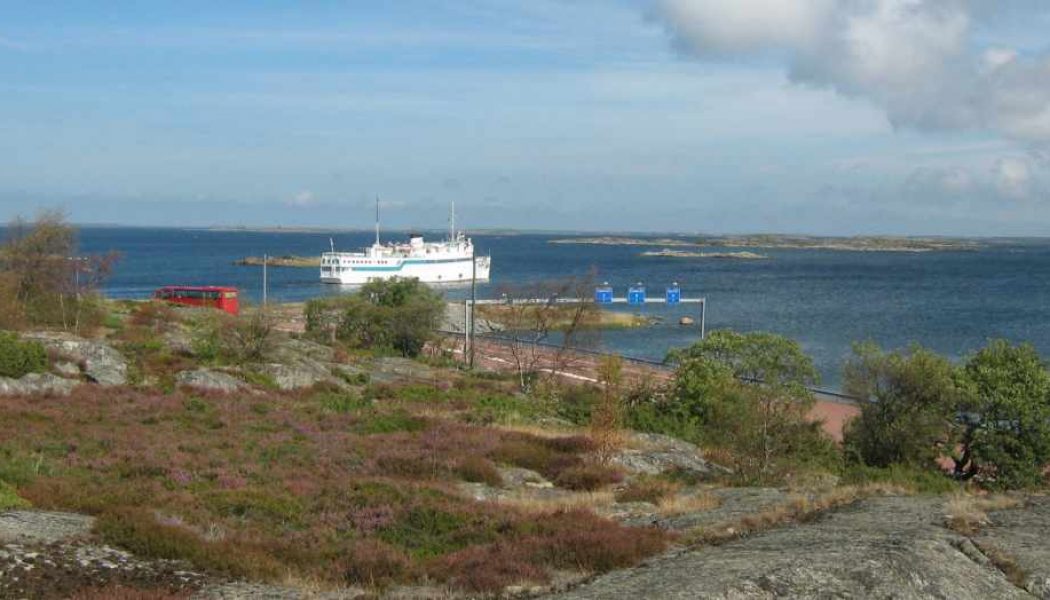This podcast was produced after a fascinating online Nordic Horizons meeting in March 2022, eight weeks before the Swedish and Finnish premiers announced their intention to join NATO. It explores their fears about Russian intervention during the accession process when both states might be vulnerable to attack, their reasons for not originally joining NATO along with neighbours Denmark and Norway in the 1950s and fears that a change in US President might make NATO a less stable long-term bet than it currently appears.
Our speakers – 3 Nordic experts and one Scot discuss opinion polls suggesting most Swedes and Finns want to join NATO and predict whether that will happen. They consider how well Nordic non-alignment has worked for 70 years, discuss America’s long-term commitment to the Alliance in light of President Trump’s insistence that NATO was ‘obsolete’ and ask if Europeans should take over defence of their own continent if the Baltic becomes a militarised front line between east and west.
Our speakers;
Dr. Hans Mouritzen, Senior Researcher, Foreign policy and diplomacy, Danish Institute for International Studies:
Dr. Johanna Vuorelma, Centre for European Studies, University of Helsinki,
Dr. Iver B. Neumann, Director, Fridtjof Nansen Institute, Norway
Professor Lynn Jamieson, Chair Scottish CND,
Chaired by Lesley Riddoch, Director Nordic Horizons.
Meanwhile, Lesley wrote this column in the Herald newspaper about the event – published on March 14th – https://www.heraldscotland.com/politics/19989893.lesley-riddoch-europe-must-step-challenge-ukraine/

Two superpowers are facing off over Ukraine. One with a re-embodiment of Joseph Stalin at the helm. The other led by a President who might be replaced by the NATO-sceptic, Putin-friendly Donald Trump. So even as Ukraine bids for NATO membership and opinion polls suggest Finns and Swedes might follow suit – maybe a third option is needed. It’s time for Europe to step up. The idea of a non-nuclear European Defence Force may sound naive in the face of Putin’s unprovoked aggression in Ukraine. It may also be technically difficult given the fact of the French nuclear deterrent. But a European defence option is quietly being discussed in countries with Russian land borders – for good historical reasons.
All four Scandinavian nations have exercised varying degrees of military restraint since NATO was formed in 1949 amidst the post-war division of Europe. Finland, fresh from two wars with Russia, opted not to join. Sweden did likewise. According to Danish foreign policy expert Hans Mouritzen, ‘If Sweden had joined, Finland would have had a letter from Moscow the next day inviting them into a Soviet defence organisation and soon a border between east and west would have run through a heavily-armed Baltic.’
Swedish and Finnish hesitation over NATO membership in the 50s avoided that scenario, and whilst Finland essentially accepted restrictions on its sovereignty, that hasn’t stopped them reaching the top of most international league tables in democracy, transparency and human development. Norway and Denmark were founding members of NATO, but Oslo has unofficially refused port access to nuclear submarines and avoided military operations near its Arctic border with Russia. Meanwhile, Denmark negotiated an opt-out from EU defence policy in 1992. But these careful policies of non-alignment, forged over 70 long years, are crumbling.
Denmark has a June referendum on ditching its EU defence opt-out so troops can join EU military missions. This week, NATO troops from 27 countries will conduct military exercises in Arctic Norway less than 500 miles from the Russian border. Neutral Sweden has deployed troops to Gotland whose mid-Baltic location makes it a possible Russian target. And in Finland, 53% now support NATO membership – up from 24% before the invasion of Ukraine. Two citizen initiatives have enough signatures for a parliamentary debate – but probably not before next year’s elections. 22 other citizens initiatives sit ahead of these two which call for NATO membership – either by referendum or government application. But there is also deep reservation in the Finnish and Swedish governments about the wisdom of abandoning non-alignment to join an American-led nuclear force. That hesitation has been portrayed as weakness by Finland’s National Coalition Party which backs NATO membership and is leading in the polls. But it’s not weakness. It’s an awareness of recent history.
Five short years ago, Donald Trump described NATO as obsolete, threatened to cut funding, refused to endorse the ‘mutual protection clause’ of Article 5 and made clear that Europeans had to step up and take care of themselves. It may have taken the terrible events in Ukraine to do it, but now almost every European country has boosted its military spending to 2% of GDP, the EU has crossed the Rubicon by sending ‘lethal force into a conflict zone’ and Germany has overturned decades of neutrality to send weapons and create a €100bn military fund.
A European defence kitty is being created – the question is who will run it? Pre-invasion, Joe Biden echoed Trump in saying the Far East was America’s primary focus these days – not Europe – and he failed to inform NATO allies before the disastrous evacuation of Kabul. Meanwhile NATO has firmly refused Ukraine’s application to join. So, what’s the answer for these border states? For Estonia, Lithuania and Latvia it’s simple – continued NATO membership.
But Norwegian security analyst, Professor Iver Neumann, outlined a different scenario at a recent Nordic Horizons event; ‘In three to seven years we will have an American president whose foreign policy agenda we know nothing about. He may be an isolationist, he may be a gung-ho militarist. What’s happening inside the Republican Party is leaving democratic politics behind. With that happening the way to go is to strengthen EU defence policy. And it’s a pity Britain left [the EU] because on this front, it would really have something to offer.’
Now of course, those sitting ‘safe’ under NATO’s nuclear umbrella will guffaw at such apparent naivety. Putin won’t accept Ukraine joining the EU, let alone a European Defence organisation. The US currently pays the lion’s share of NATO’s budget – will European nations really cough up the rest? And what about France. Why would it accept any limitation on its nuclear deterrent? Is the bureaucratic EU really capable of stepping up? And here in Scotland, does the EU-sceptic left and the sizeable minority of Brexit voters trust the EU any more than NATO? These are all valid questions. And there is currently no hint that any European country is advocating a move away from NATO, or its gradual transformation into a European-led body. Yet unprecedented things are happening at the heart of Europe. Old norms are suddenly changing.
It’s true that neutrality – though successful for generations – is now being questioned by rattled Nordic nations. But that doesn’t mean they’ve given up on the primacy of peace-keeping and diplomacy. It doesn’t mean they want to see the Baltic ringed by steel. It doesn’t mean they want nuclear weapons in their waters or NATO bases on their land. And it doesn’t mean they’ll embrace the possibility of President Trump tomorrow as the price of protection against a predatory President Putin today. A European Defence Force could offer a middle way – a defence alliance that doesn’t rely on the nuclear buttons or personal obsessions of any super-power and instead offers a European shield to Russian-bordering states like Ukraine. It’s unlikely – granted. But not impossible. And that’s the difficult arena we all now inhabit.
This podcast was edited by Lesley Riddoch and Chris Smith and made possible by our generous crowdfunding contributors. If you’ve any feedback, we’d love to hear from you via nordichorizons@hotmail.co.uk[/vc_column_text][/vc_column][/vc_row]







